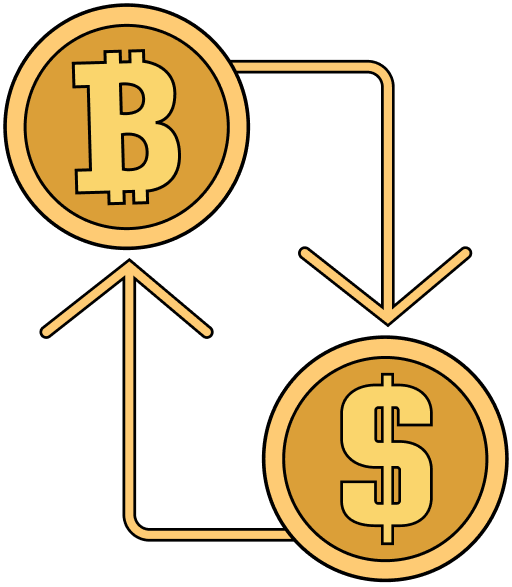Introduction
The question which crypto exchange has the lowest fees is one of the most frequently asked among investors and traders. With a multitude of exchanges worldwide, each implementing distinct fee structures, trading costs can differ significantly. Low fees are appealing because they directly influence profitability, especially for traders performing frequent transactions. Understanding fee structures and comparing platforms is crucial before selecting an exchange.
Understanding Crypto Exchange Fees
Before deciding which exchange offers the minimal fees for crypto trading, it is useful to understand the types of fees platforms usually charge.
Trading fees
These fees are commonly expressed as a percentage of each transaction. Exchanges often distinguish between maker fees (for adding liquidity to the order book) and taker fees (for executing orders immediately, removing liquidity).
Deposit and Withdrawal Fees
Depositing cryptocurrency is usually free, but withdrawals often incur a small fee to cover blockchain network costs. Some platforms may also charge for fiat deposits or bank transfers.
Hidden or additional costs
Some exchanges promote low trading fees but compensate through wider spreads, the gap between buy and sell prices. Others charge extra for credit card use or third-party payments.
Knowing these details helps traders look beyond the headline fee percentages.
Binance
Binance frequently appears in discussions about exchanges with the lowest fees. It offers a base rate of 0.1% for both makers and takers.
A key feature is the Binance Coin (BNB) discount. Users who hold and transact with BNB enjoy reduced fees, which is particularly attractive for high-frequency traders.
For fiat purchases, Binance fees depend on the payment method. Bank transfers are usually low-cost or free, while card transactions may be higher. Overall, Binance’s combination of global liquidity and low percentage fees makes it a cost-effective choice.
KuCoin
KuCoin is another popular exchange known for low trading fees, roughly 0.1% for spot trading, similar to Binance.
Holders of KuCoin’s native token, KuCoin Shares (KCS), qualify for fee discounts. The larger the KCS holdings, the greater the reduction, which attracts loyal users.
KuCoin is also notable for listing smaller or niche tokens. Traders seeking altcoins not available on larger platforms often choose KuCoin while benefiting from competitive fees.
Kraken
Kraken, one of the oldest exchanges, is recognized for transparent pricing. Spot trading fees start at 0.16% for makers and 0.26% for takers, slightly above Binance and KuCoin but still reasonable.
High-volume traders receive lower rates. For very large monthly volumes, fees may drop to 0.00% maker and 0.10% taker.
Kraken’s strength lies in its clear and predictable fee structure, free from hidden spreads. While not always the cheapest, it appeals to users prioritizing transparency.
Coinbase Pro
Coinbase Pro, now integrated into Coinbase Advanced Trade, historically had higher fees than Binance or KuCoin. Maker fees started at 0.00%, but taker fees usually began at 0.40% for small traders.
High-volume users benefit from reduced fees. Despite higher rates for average users, the platform offers ease of fiat-to-crypto transfers and regulatory assurance, which some traders value more than minimal fees.
Decentralized Exchanges
Some users look at decentralized exchanges (DEXs) like Uniswap, PancakeSwap, or Curve when considering low-fee trading.
DEXs do not levy traditional trading fees. Users pay a swap fee (around 0.3% on Uniswap) plus blockchain gas fees. On networks like Ethereum, gas fees can exceed centralized exchange costs.
However, on low-fee chains like Binance Smart Chain or Polygon, DEXs can be very competitive. Small trades may still favor centralized platforms, but DEXs offer non-custodial and cost-effective alternatives in specific scenarios.
Factors Beyond Fees
While fees are important, other considerations are essential when selecting an exchange:
-
Liquidity: Low fees with poor liquidity can cause slippage, effectively increasing costs.
-
Security: Saving a fraction of a percentage is pointless if funds are at risk.
-
Regulations and compliance: Legally compliant exchanges may charge slightly more but ensure safer operations.
-
Ease of use: Beginners may prefer simpler interfaces, even at a higher fee.
Balancing these factors ensures a secure and efficient trading experience.
Practical Example
Consider a trader executing ten trades daily, each worth $1,000:
-
On Binance, 0.1% per trade equals $1 per trade, $10 daily.
-
On Kraken, 0.26% taker fees result in $2.60 per trade, $26 daily.
-
On Coinbase Pro, 0.40% taker fees cost $4 per trade, $40 daily.
Over a month, the difference between Binance and Coinbase Pro could approach $900. For active traders, such disparities are significant.
Conclusion
Which exchange is cheapest? Binance and KuCoin generally offer the lowest fees, around 0.1%, with token-based discounts. Kraken provides transparency and favorable pricing for high-volume users. Coinbase Pro, while more expensive for casual traders, offers regulatory benefits. DEXs can be economical, especially on low-cost chains. Ultimately, the lowest fees depend on trading volume, personal requirements, and preferred features. Traders must consider fees alongside liquidity, convenience, and security when selecting the optimal platform.














 Twitter
Twitter
 Telegram
Telegram
